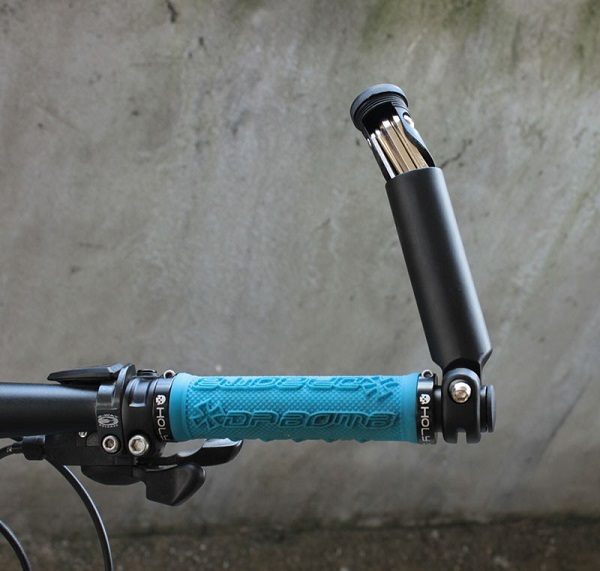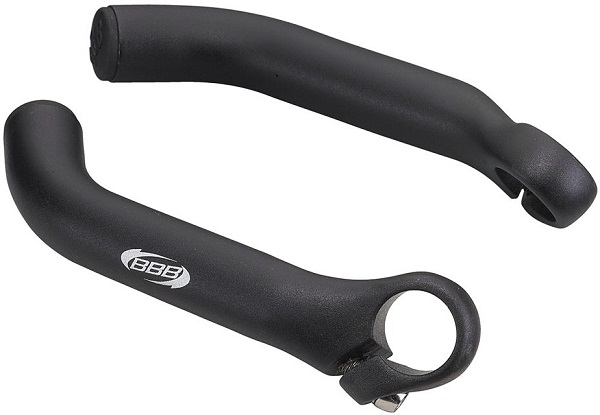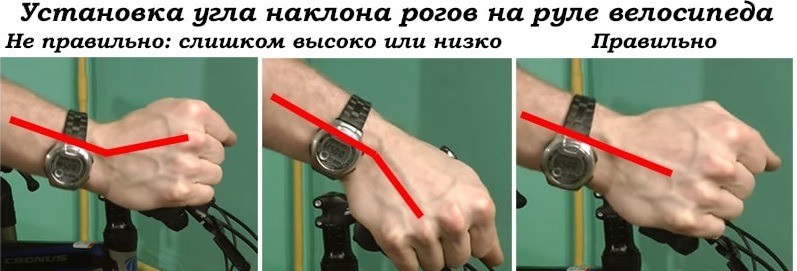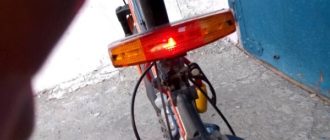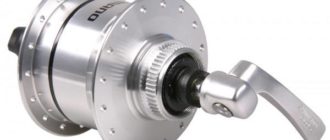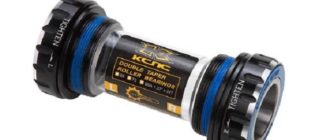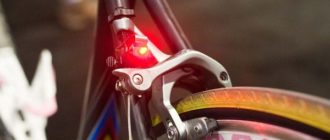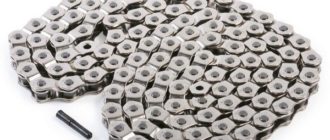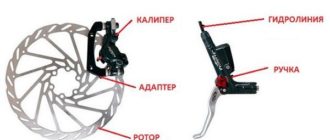Cyclists come in all shapes and sizes: some people buy a bicycle to occasionally get out of town or ride around the park on a cool summer evening, some buy a bicycle to stay “on trend,” and for some, two-wheeled transport is not just a means of transportation, but a way of life. It is the latter category of cyclists prefer to equip their iron friend functional accessories, which not only decorate the bike, but also make it a more comfortable means of transportation. One of these accessories are horns on a bicycle handlebars. What is this attribute and why opinions on its usefulness are divided into two camps?
To begin with, it is necessary to dwell in more detail on such a functional element of a bicycle, as its handlebar. It does not just allow you to change the direction of travel. It has many more tasks, and cyclists who spend a lot of time on the road, in the obligatory need to know how to keep your hands on the handlebars and what should be this element.
The importance of the handlebar
Each of its type is designed for a specific class of bicycles. It is an integral component of any bike, on which it is definitely not worth saving money. Its shape largely determines the degree of comfort of the cyclist and his safety. Therefore, when riding, you need to pay attention to such parameters as:
- The position of the hands. Constant change of grip while riding, especially over long distances, avoids painful sensations in the wrist area. The cyclist should have the ability to change hand position to distribute the load on the joints. This is not only important for the health of the arms or back: for example, changing hands on the handlebars when going uphill helps to put a little more effort into pedaling.
- Seating. This factor determines the degree of comfort and safety while driving. If you ride a long time in an uncomfortable position, the problems with joints will not be long in coming.
Here we came smoothly to the question of why we need horns on the handlebars of a bicycle. They provide additional comfort while riding, as well as allowing you to change your hand position during a long ride. However, not everyone considers bicycle horns a useful addition. Let’s understand in more detail what their design is, what varieties there are, and how to properly install them to get the most out of them.
What are bike horns for?
Horns for a bicycle – this is not an extreme necessity. There are models for which this accessory will be nothing more than a decorative element, which, in addition, takes up a decent amount of space on the handlebars. If the main load falls on the seat, and the rider’s body is held vertically, that is, perpendicular to the ground, then the bike rails, respectively, are not needed. An example would be an ordinary recreational bicycle.
Quite another thing – moutinbikes: on such a model, the center of gravity of the rider is shifted to the side of the hands, so the horns on the bicycle handlebars will be very handy here. What gives this accessory? It turns out that installing horns on a bicycle handlebar has a lot of advantages:
- Allows you to relax your hands while riding, because the horns on the handlebars of the mountain bike are in a different plane.
- Prevents your hands from slipping in wet weather and without gloves.
- Protects the handlebars if you need to put the bike “upside down”.
- When climbing uphill, bicycle horns allow you to pedal more efficiently.
Despite the extensive list of advantages, there are opponents of such accessories. And, it must be said, they can be understood. Bike horns are not always useful. Quite the contrary – sometimes they greatly interfere.
Disadvantages of bicycle horns
The first disadvantage, which most often plays against the installation of bicycle horns, is the reduction of space on the handlebars. There are only two ways out of this situation:
- Slide the handlebars and brake handles toward the center of the handlebar.
- Install the horns inside the handlebars (not the best option, as it will require more effort and time to turn, which is not very safe).
Bike horns create additional discomfort when you need to pack your bike in a case. Especially if the pack is “tight.” If you hit a passerby with the handlebars, you’ll probably just give the person a bruise. Unpleasant, of course, but if it happens by means of horns, the consequences can be much more serious.
If the horns have too much “outreach”, then in a narrow space, they can accidentally catch on the handlebars or turn it at right angles – a fall can not be avoided. In any fall, it is possible that the horns will land on the cyclist, followed by the bike itself. In this case, you can get serious injuries.
And a few more nuances to the piggy bank of disadvantages:
- It is inconvenient to show one hand the direction of travel when the other is holding on to the horn.
- When passing a difficult section, when you need to brake in an instant, the hands on the horns can be a fatal mistake.
The conclusion is as follows: inexperienced riders who have not ridden a lot of time on a bike do not necessarily and even undesirable to put on bike horns. Experienced riders who travel long distances are quite another matter.
How to choose the right one
We have already figured out why the horns on the handlebars of the bicycle. It remains only to choose a suitable model. In stores bicycle goods you can find a fairly large range, and if you look at the online store, you can even get confused. Before buying, you need to measure the diameter of the handlebar. To install horns with an external attachment you will need free space on the handlebar. If you do not have it, consider models with an inner mount.
Size
Handlebar horns can be long, medium or short. When choosing, you need to consider the purpose of the accessory. If you need to regularly change the position of your hands, then long horns will be the best option. Short horns provide a firm grip.
Geometric shape
Horns have a curved, straight or anatomic shape. The former provides the necessary number of grip options. Anatomic one provides comfort and reliability for long trips. Chinese models of horns usually have a straight shape, which is not the best option, which, except for discomfort, will not give anything more.
Materials of manufacture
If you pay attention to the cost of bicycle horns, you can notice that it is conditionally divided into 3 categories, which determine the material of manufacture:
- Plastic and aluminum horns. A cheap option that does not have sufficient strength and reliability. A huge range is offered by Chinese manufacturers. In the case of breakage, they cannot be repaired.
- Metal and composite horns. The average price segment. Products made of these materials can withstand serious loads and will definitely not fall apart when dropped.
- Titanium and carbon fiber horns. Lightweight but very durable designs that make sense to put on mountain bikes, if their owner prefers to travel in comfort.
Parts can be joined by soldering, gluing or welding.
Type of attachment
We have already talked about the fact that the attachment is external and internal. Horns of the first type are installed with clamps, the second – with a spacer.
How to put the horns on the handlebars of the bicycle
Before you put the horns on the handlebars of the bicycle, you need to cut the grips. You will need clamps and a hexagon for installation. Step-by-step instructions:
- Use the clamps to clamp the horns. Be careful when installing the horns on your carbon handlebar. To avoid damaging it, look for reinforced seats.
- Before you install the horns on your bike handlebars, you need to decide where to locate them. You can leave the handlebar mechanics in place, or you can move them closer to the center of the handlebar.
- It remains only to install the horns at the correct angle (usually 45 degrees). Here it is necessary to take into account the rider’s riding position. When setting the angle, you can be guided by the principle: the hand should be a kind of extension of the forearm.
To screw on the horns, regardless of the material of manufacture, it is necessary to be careful not to damage the steering elements.
Conclusion
Now you know what you need horns on the handlebars of a bicycle and how to choose and install them correctly. It remains only to remind you that you should install such elements only when there is a clear need for them.

